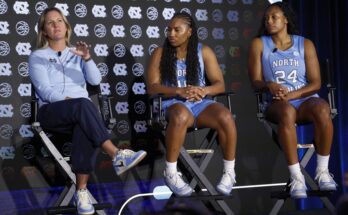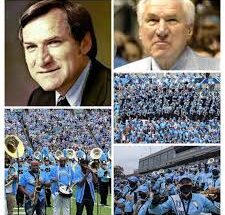The rising valuation of the Georgia Bulldogs confirms the program’s dominance in college football.
The Georgia Bulldogs’ meteoric rise in valuation is not just a reflection of market dynamics or media hype—it is a clear confirmation of the program’s undisputed dominance in modern college football. Over the past several years, the University of Georgia has transformed its football team into a juggernaut both on and off the field. Their competitive achievements, recruiting strength, financial growth, and cultural impact have converged to place the Bulldogs not only among the top-tier football programs, but arguably at the very pinnacle of the sport.
One cannot understand Georgia’s current status without examining the profound on-field success they have enjoyed. Winning back-to-back national championships in the 2021 and 2022 seasons was not a fluke or the product of a single golden generation of talent—it was the culmination of years of consistent recruiting, elite coaching, and institutional investment. Under the leadership of head coach Kirby Smart, Georgia has developed a culture of excellence defined by discipline, innovation, and an unrelenting pursuit of perfection. The Bulldogs have consistently ranked among the top teams in national polls and playoff rankings, further proving that their success is sustainable rather than situational.
At the heart of Georgia’s dominance is its recruiting machine. The Bulldogs have routinely finished in the top three of national recruiting rankings, pulling in five-star talent from across the country. This success on the recruiting trail is not only a function of Georgia’s national profile but also of the developmental culture Smart has fostered. Players know that coming to Georgia offers not just exposure, but a real opportunity to grow under elite coaching staff and conditioning programs. The NFL Draft results support this—Georgia continues to send high numbers of players to the professional level, showcasing the program’s ability to refine raw talent into NFL-ready athletes. This cycle of recruitment, development, and professional placement only enhances Georgia’s appeal and, in turn, its financial and cultural valuation.
The increasing financial valuation of the Bulldogs program is an equally important indicator of their dominance. According to recent estimates, the Georgia football program is now among the most valuable in the nation, with its valuation exceeding hundreds of millions of dollars. This figure is built on several critical factors: television revenue, ticket sales, merchandising, sponsorship deals, and booster contributions. The Bulldogs’ regular presence in prime-time games and major bowl appearances boosts their national visibility, which in turn drives media deals and increases merchandise revenue. Additionally, Sanford Stadium is almost always filled to capacity, contributing tens of millions of dollars annually in ticket sales and game-day revenue. The Bulldogs brand is stronger than ever, with its iconic “G” logo and signature red-and-black color scheme now recognized nationwide.
But valuation is more than just dollars and cents. It is a measure of influence, prestige, and power in the college football ecosystem. Georgia’s ability to command national attention, influence media narratives, and shape the college football playoff picture every season places them in a rare echelon. Their increasing valuation is a symptom of this dominance—a reflection of a program that wins games, captivates audiences, and commands loyalty from fans and alumni alike.
Institutional support has also played a crucial role in Georgia’s ascent. The University of Georgia administration and athletic department have spared no expense in investing in the program’s future. From upgraded facilities, such as the \$80 million football operations center, to increased budgets for recruiting and staffing, Georgia is committed to staying at the top. These investments are not just symbolic—they directly contribute to the team’s success by providing athletes and coaches with the resources they need to excel. State-of-the-art weight rooms, rehabilitation centers, film study rooms, and nutrition programs all help give the Bulldogs an edge that translates into wins on the field and dollars off it.
Another often overlooked aspect of Georgia’s valuation surge is its brand loyalty and fan engagement. The Bulldogs boast one of the most passionate and loyal fanbases in all of college football. Whether it’s a home game in Athens or a neutral-site showdown in Atlanta, Georgia fans turn out in droves, creating electrifying atmospheres and providing the team with a genuine home-field advantage. This loyalty translates into massive merchandise sales, high donor participation, and significant alumni giving, all of which feed into the overall valuation of the program. It also makes the Bulldogs highly attractive to corporate sponsors, who see value in associating their brands with a program that has such a wide and devoted following.
Beyond the numbers and trophies, Georgia’s rise reflects a broader shift in the balance of power within college football. For decades, programs like Alabama, Ohio State, and Notre Dame dominated both the field and the financial charts. While those schools remain elite, Georgia has disrupted the status quo, positioning itself as the new standard-bearer. What makes Georgia’s rise particularly impressive is that it comes in an era of heightened competition. The transfer portal, NIL regulations, expanded playoff formats, and increased parity across the sport have made it harder than ever to maintain dominance. And yet, Georgia not only sustains its success—it seems to thrive on the challenges of modern college football.
Name, Image, and Likeness (NIL) changes have significantly impacted the landscape of college football, and Georgia has adapted with remarkable agility. Rather than resisting change, Georgia embraced the NIL era by building a robust support structure to help players maximize their personal brands while maintaining team cohesion. This proactive approach has made Georgia an attractive destination for top recruits who want to succeed both on the field and in their financial endeavors. By aligning itself with NIL collectives and building strong relationships with businesses, Georgia has positioned itself as a forward-thinking program prepared for the future of college sports.
Georgia’s rise in valuation is not limited to athletics alone—it has also contributed to the university’s broader success. Application numbers are up, national rankings are improving, and alumni engagement has soared. The success of the football team has become a key marketing tool for the entire institution, helping to attract students, faculty, and donors. This synergy between athletics and academics underscores the comprehensive nature of Georgia’s dominance. Unlike some programs where athletic success occurs in isolation, Georgia’s achievements in football enhance the reputation and reach of the entire university.
The Bulldogs’ dominance is also evident in the changing tone of national conversations about college football. Analysts, media personalities, and former players often cite Georgia as the gold standard for how a modern program should operate. From their recruiting philosophy to their game-day preparation, Georgia is studied and emulated by rivals. Even opponents acknowledge the excellence of the Bulldogs program, often referencing their physicality, discipline, and depth as unmatched in the sport. This respect—earned through consistent success—is perhaps the clearest sign of Georgia’s current reign.
While past dominance in college football has often been cyclical, there is a growing sense that Georgia’s time at the top may be more durable. The infrastructure is in place, the culture is strong, and the leadership is elite. Kirby Smart is still relatively young in coaching terms, and his passion for the program and deep ties to Georgia suggest he’s not going anywhere anytime soon. This continuity ensures that the Bulldogs are well-positioned to remain contenders for the foreseeable future. Other programs will rise and fall, but Georgia’s foundation appears built to last.
Moreover, Georgia’s valuation reflects more than just short-term gains—it signals long-term strategic thinking. The university and athletic department have successfully created a vertically integrated operation that generates revenue, reinvests in success, and adapts to new challenges. This model is one that other schools will try to replicate, but few will be able to execute at Georgia’s level. The Bulldogs have set the standard not just for performance, but for program-building in the modern age.
In many ways, Georgia’s dominance is a throwback to the traditional values of college football—toughness, loyalty, development—merged with a cutting-edge approach to analytics, marketing, and player empowerment. This blend of old-school grit and new-school thinking is what makes the program so formidable. It’s also what gives their rising valuation its true meaning. This isn’t a flash-in-the-pan success story or a short-term spike in value; it’s the result of careful planning, relentless execution, and a clear vision for what a football powerhouse should be.
Ultimately, the rising valuation of the Georgia Bulldogs is more than a financial headline—it is a barometer of the program’s strength, sustainability, and supremacy in the college football world. It confirms what fans, rivals, and analysts alike already know: Georgia isn’t just winning games; it’s setting the agenda for the sport. The Bulldogs have become the benchmark against which all other programs are measured, and as long as they continue on their current trajectory, their dominance—on the field and in the financial reports—shows no signs of waning.



